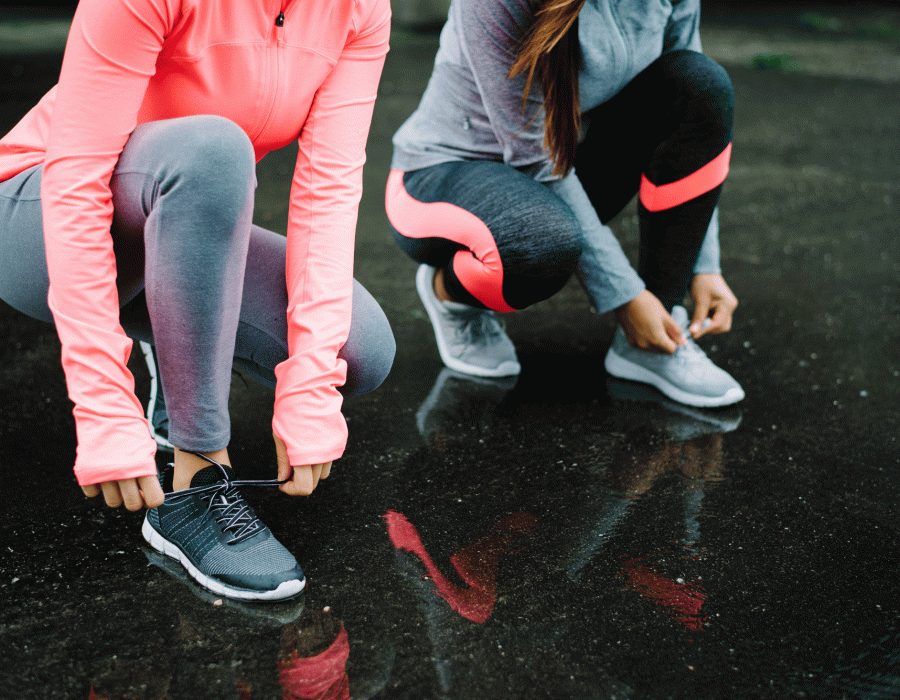Fitness and Performance
How to Warm Up for a Run (Especially in Winter)

Warming Up
This is a term most people understand. If you look at exercise and running websites, there’s plenty of information on how to warm up for a run and the importance of it. So you might be thinking, why another article on this topic? Don’t we know how to warm up by now? Well, possibly not.
The amount of runners who develop injuries and end up being seen in the physio clinic is very high. When asked about their warming up, most admit they hardly spent time on it. So, maybe we do have to keep paying attention to this subject.
Colder Winter Months
Due to the colder temperatures in Winter, warming up properly for your run is even more important. The cold temperature reduces blood circulation in your arms and legs and muscles may feel stiffer. A good warm-up will gently increase blood circulation to the muscles, increase heart rate, and boost flexibility. Warming up properly before a run can help prevent running injuries from happening. You have to admit, spending 10 minutes on a warming up is far better than not being able to run properly while you recover from injury?
The Key Elements of a Good Warm-Up
Now we have re-established why warming up is important, let’s take a look at how to warm up. There are lots of different approaches and it can be difficult to pick the right one. First of all, it is important to know what your body might need the most. If you have been sitting behind your desk for 8 hours, and want to go for a run, it might be smart to pay extra attention to your hip flexors and hamstrings. If you have just woken up and your back feels stiff, you might want to start with a few yoga sun salutations before going outside. You can do your warm-up in the comfort of your home or incorporate it into your running routine. The key thing is to ensure you feel your heart rate increase, your breathing becomes deeper and faster, and that you literally feel warmer.
Dynamic Versus Static Stretch
There is one important factor that most running specialists all agree on. Dynamic stretches are better than static stretches when it comes to warming up. A static stretch is when you put a specific muscle (group) on stretch and passively hold it for 30-60 seconds. Dynamic stretches work slightly differently. A dynamic stretch is when you actively move a joint in a specific direction and repeat this for multiple repetitions. With each repetition, you try to move slightly further but without pulling or pushing the limb to force a stretch. For example, while walking moving your knee’s as high as you can up towards your chest or walk a few meters on your toes or heels. The beauty of dynamic stretches is that you can target different muscle groups in one exercise and you can make the exercise/stretch more specific to running.
Sample Warm-Up for Running
The number of different exercises available can make putting together a warm-up plan a bit overwhelming. This sample routine is one we regularly teach our patients and is a great place to start.
Total time: 8-10 min.
Step 1: Start with walking at your normal pace when you leave the house. Make sure you don’t forget to warm up your arms by letting them swing with every step. Exaggerate your arm movements and allow your torso to rotate slightly.
Step 2: After 2 minutes increase your pace but remain walking and swinging your arms up.
Step 3: After another 2 minutes pull your knee’s high up towards your chest with every step. Repeat at least 10 times on each leg.
Step 4: Repeat step 3 but this time, while your knee is by your chest, lift your foot up and forward. You should feel more of the stretch in your hamstring. Bring your foot down again and repeat with the other leg. Do at least 10 times either side.
Step 5: Continue walking quickly and now kick your heels backwards, trying to move them as close to your buttocks as possible. Again, repeat at least 10 times for each leg.
Step 6: Now try to walk on your heels for 10 meters. Do this by pulling your toes up as far as you can and walking with small steps. This is designed to stretch your calf muscles.
Step 7: For another 10 meters try to walk on your toes. Make small but quick steps.
Step 8: You should start to feel warmer by now. Now, do 10 walking lunges on each side. Make sure you keep your body nice and upright, your lunge is deep, and your front knee doesn’t move forward and past your ankle.
Step 9: Finally, start a slow run or jog for 1-2 minutes and repeat the above dynamic stretches (steps 3 to 7) during this easy run. You can then slowly increase to your normal running pace and enjoy your run!
Article by: Rianne Avezaat – Chartered Physiotherapist at Bodyset